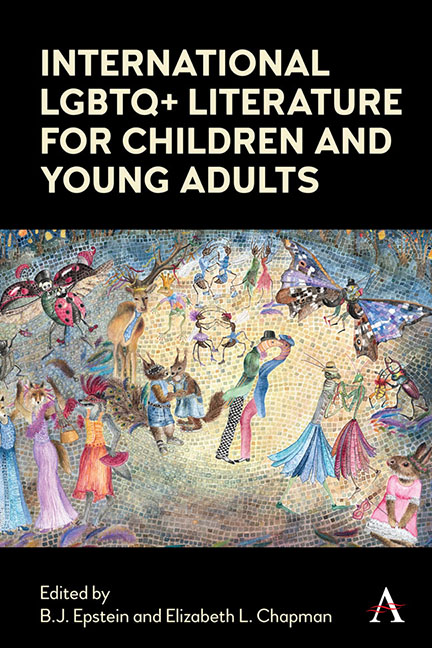Book contents
- Frontmatter
- Dedication
- Contents
- List of Illustrations
- Acknowledgements
- Notes on contributors
- Introduction
- BRAZIL
- FRANCE
- GERMANY/ AUSTRIA
- GREENLAND
- INDIA
- INDIGENOUS WRITING
- ITALY
- MULTINATIONAL
- MULTINATIONAL
- MULTINATIONAL
- THE PHILIPPINES
- SLOVENIA
- SOUTH KOREA
- SPAIN
- SWEDEN
- SWEDEN
- List of Primary Texts
- Index
Chapter Eight - Heather Has a Donor: 30 Years of International Lesbian-Themed Children’s Picture Books about Donor Insemination, 1989– 2019
Published online by Cambridge University Press: 18 November 2021
- Frontmatter
- Dedication
- Contents
- List of Illustrations
- Acknowledgements
- Notes on contributors
- Introduction
- BRAZIL
- FRANCE
- GERMANY/ AUSTRIA
- GREENLAND
- INDIA
- INDIGENOUS WRITING
- ITALY
- MULTINATIONAL
- MULTINATIONAL
- MULTINATIONAL
- THE PHILIPPINES
- SLOVENIA
- SOUTH KOREA
- SPAIN
- SWEDEN
- SWEDEN
- List of Primary Texts
- Index
Summary
Introduction
While children's literature with LGBTQ themes has been explored in the last three decades (see Abate and Kidd 2011; Cart and Jenkins 2006; Day 2000; DePalma 2016; Dorr and Deskins 2018; Epstein 2012a, 2012b, 2013, 2014; Jenkins and Cart 2018; Jiménez 2015; Lester 2014; McGlashan and Sunderland 2010; Miller 2019; Naidoo 2012; Sciurba 2017; Sunderland and McGlashan 2012, 2013; Taylor 2012, among others), a small but growing body of literature has remained uninvestigated: children's books about assisted reproductive technology and in particular, books about donor insemination used by lesbian mothers to build their families. While picture books for young children lack portrayals of lesbians in general (Cummins 2015; Jiménez 2015), they also lack representation of children who are donor-conceived in any type of family, straight or LGBTQ. Of the approximately 576 books extant on the subject of assisted reproductive technology for children in the world (Sarles 2019a), 241 of them, or approximately 42 per cent of them are about sperm donation. Of those, 47 (19 per cent) have been written specifically for the children of lesbians who were created via sperm donation. That is, approximately one-fifth of all children's books written on sperm donation are written by or for lesbians.
In the context of global publishing, then, such books are noticeably rare, and are seldom found in the average public library (only 29 of them are found on library shelves somewhere around the world, according to WorldCat; see also Mendell and Sarles 2010b). This is remarkable given the fact that there has been a lesbian baby boom taking place around the world for the last 40 years (Agigian 2004; Patterson 1995). Nevertheless, the mere existence of these books is evidence of the increasing presence of lesbians with children conceived via sperm donation.
For this chapter, only those books written by lesbian mothers are examined; however, an exhaustive list is available on pages 321–23, of this book and on this author's blog (Sarles 2019a). Amongst other things, these books were analysed for how lesbian families are portrayed, how donors are depicted, and whether the children were conceived via known or unknown donor.
- Type
- Chapter
- Information
- International LGBTQ+ Literature for Children and Young Adults , pp. 147 - 180Publisher: Anthem PressPrint publication year: 2021



